Acute pain or chronic pain in the hip joint (HJ) often indicates the development of diseases of the musculoskeletal system, which is important to diagnose and treat in time. In the early stages of the development of the pathology, it is possible to relieve joint pain in a conservative way, using tablets and special ointments. When the disease begins, the joints become immobile and the persistent pain syndrome is alarming, and surgical intervention is urgently needed.
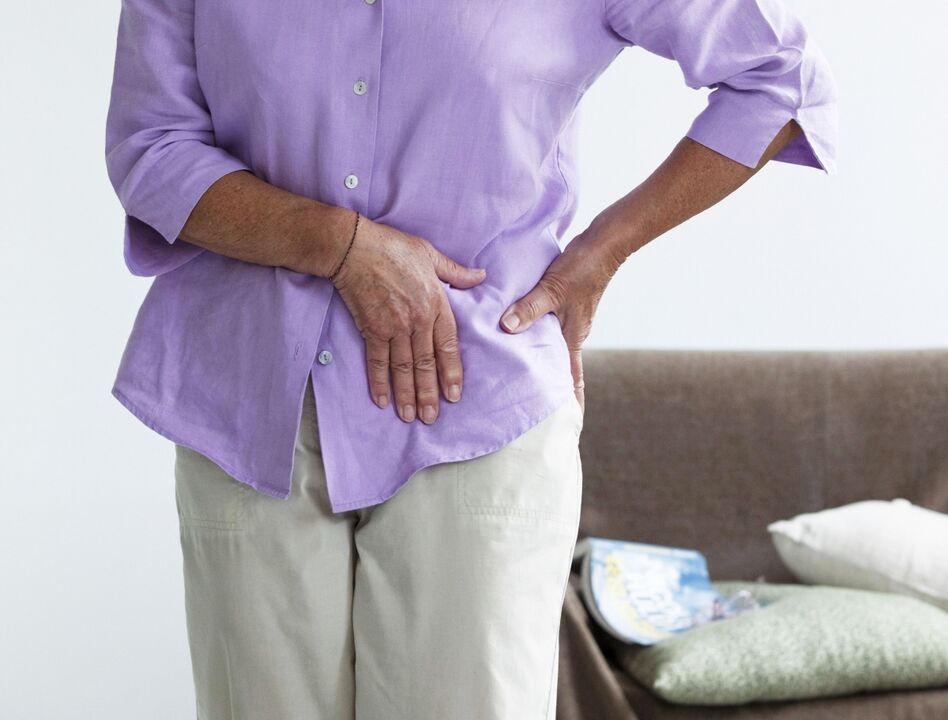
Possible causes and symptoms
Severe pain in the hip joint can be caused by various degenerative-dystrophic pathologies, under the influence of which the joint is destroyed, erased, and stops functioning completely. Periodic pain is often a concern of spinal disease, which causes tension in the muscles and pinches the nerve fibers. Symptoms of pain in the pelvic bones occur as a result of injuries, bruises, fractures of the head or neck of the femur. To determine the exact cause of hip pain, you need to go to a doctor.
Traumatic factors
Bad bruises
Acute pain when sitting, walking or abducting the leg occurs due to bruising that occurs as a result of falling sideways or a direct blow to the femoral joint. With a bruise, the structure of the bone tissue remains intact, but the soft fibers suffer greatly, and damage to the ligaments may occur. An extensive hematoma forms at the impact site, which hurts when pressed, but if the person rests, there is no pain syndrome. When pain in the hip joint on the left or right side gradually increases, it is worth visiting a doctor to rule out a fracture.
hip dislocation
Such a violation occurs under the influence of a large force along the axis, bent at the knee joint with a fixed torso. A common situation of this condition is an accident or fall from a great height. With dislocation, one worries about sharp joint pain that radiates to the leg and inguinal area, which completely disrupts the function of the limb. You can reduce the condition by applying cold to the affected area, further, qualified medical assistance is required.
It is important to remember that if a dislocation is suspected, it is forbidden to try to fix the joint yourself.
Broken hip
It is often the cause of pain in the hip joint in women in old age. Integrity damage often occurs as a result of falls and strong impact of the trochanter on a hard surface. Fracture of the femoral neck is considered one of the most dangerous pathologies, because there is a high risk of complications in the form of thrombosis, infection, and necrosis. Common symptoms:
- Severe pain in the left or right hip joint, aggravated by attempts to move the limb or take it to the side.
- When sitting or lying down, the victim cannot lift his legs off the floor.
- In relation to healthy and injured legs appear short.
- If the nerve structure is affected, numbness appears in one limb.
After the operation
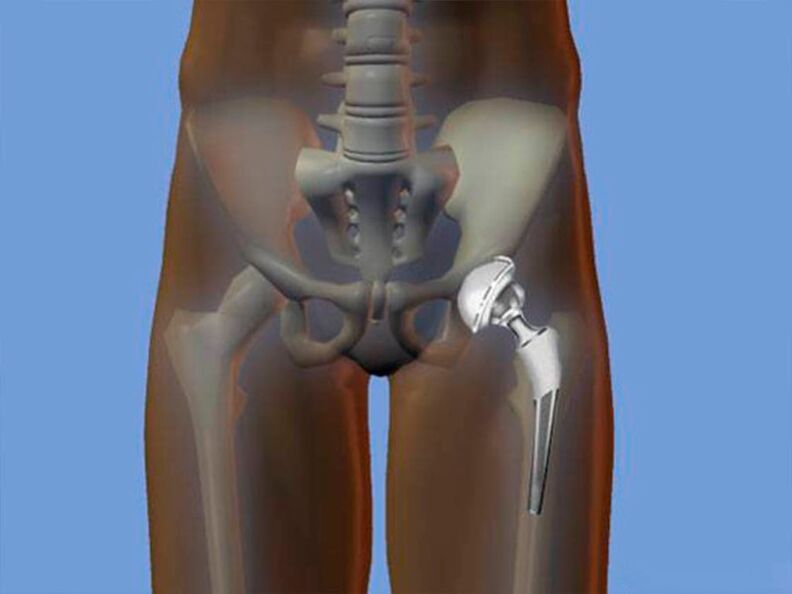
Often pain in the hip joint, lower back and back occurs after surgery related to the installation of implants. The need to insert an endoprosthesis appears in cases where the original joint has worn out and wears out for some reason, and it is not possible to cure the problem in a conservative way. To prevent further destruction of the joint, endoprosthesis is performed. After the operation, until the wound is completely healed, the patient will be disturbed by pain, however, with each new day, their intensity will decrease.
Complications after hip replacement have a negative impact not only on the hip area, but also affect the physical condition, general psychology, physical activity and the ability to walk. To restore the health of the former, it is necessary to undergo a series of rehabilitation measures, which are determined based on the pathology and the developed problem. For a quick and effective recovery, it is necessary to establish the causes of complications and limitations after hip arthroplasty.
Illness
infectious inflammation
Dangerous complications that cause pain in the hip joint. There are types of purulent inflammation such as:
- main. The main reason is the direct penetration into the joint cavity of pathogenic microflora.
- Secondary. The infection penetrates into the articular structure with blood from another focus of inflammation.
Symptoms of inflammatory complications are:
- musculoskeletal pain;
- edema formation;
- redness of the skin;
- heat;
- limb dysfunction.
Inflammatory bursitis
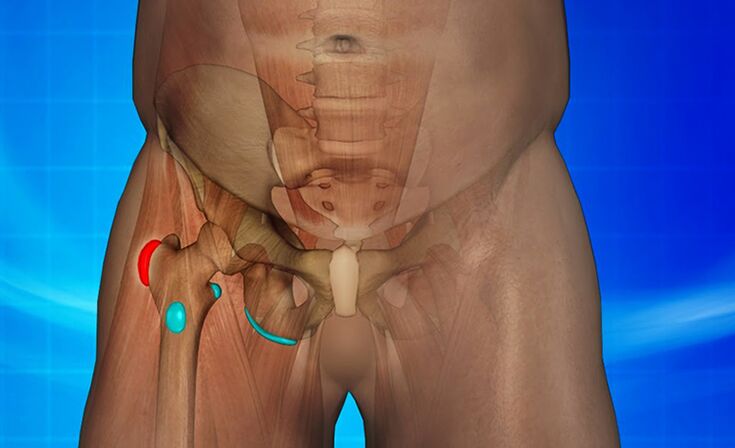
Often, frequent joint injuries lead to an inflammatory process in the bag.
This disease is often diagnosed in athletes whose knees and hip joints are often injured and bruised.
Under the influence of traumatic factors, inflammation develops in the joint bag. Gradually, pathological exudate accumulates in the bursa, inflammatory complications join. When walking, pain in the groin and below begins to bother, giving to the knees. There is a feeling of stiffness of movement, in advanced cases, the limbs hurt even at rest, the temperature rises, and swelling forms.
Tumors of various etiologies
Pain in the hip joint on the right or left side can cause a neoplasm:
- tameAs it increases in size, it compresses the nerve structures, causing discomfort and periodically causing unpleasant symptoms in the spine and hips.
- Malignant. These are dangerous neoplasms that tend to grow rapidly and spread metastases throughout the body. In the early stages, patients complain that the joints hurt after running or walking. In addition, the tumor compresses the nerve structure, one leg is taken from a person, the sacrum is very painful, painful symptoms are felt in the lumbar region. Common painkillers in this case cannot relieve the pain in the hip joint.
- Sarcoma of the femoral neck. Severe bone disease, cancer, during the development of which the patient's pelvic bones are very painful after sitting, walking, standing. This disease is characterized by chronic fractures of the femoral neck, in which joint function is significantly limited. Also pay attention to the signs of intoxication, under the influence of which the general condition of the patient deteriorates significantly.
Another reason
Due to the destruction of the cartilage in the joints, a person begins to experience difficulty with movement.
If a person has pain in the legs and hip joints, the following pathologies can cause symptoms such as:
- Coxarthrosis. A chronic, degenerative-dystrophic disease characterized by the destruction of interarticular cartilage and the growth of osteophytes on bone structures. At the initial stage, symptoms are not expressed, but as the development progresses, the functional mobility of the joints is disturbed, the patient is disturbed by excruciating pain, muscle deformities and atrophy are observed. If treatment is not started on time, a person becomes disabled.
- Osteochondrosis. Degenerative disease, in which the lumbar spine is subject to destruction and deformation. Due to inflammation and pinching of nerve fibers, the pain radiates to the thigh, the patient's motor activity is significantly reduced, the discomfort is alarming even in a state of complete rest.
If the hip joint hurts in children, the development of such pathologies is possible:
- hip dysplasia and subluxation;
- osteochondropathy;
- epiphyseolysis.
Diagnostic method
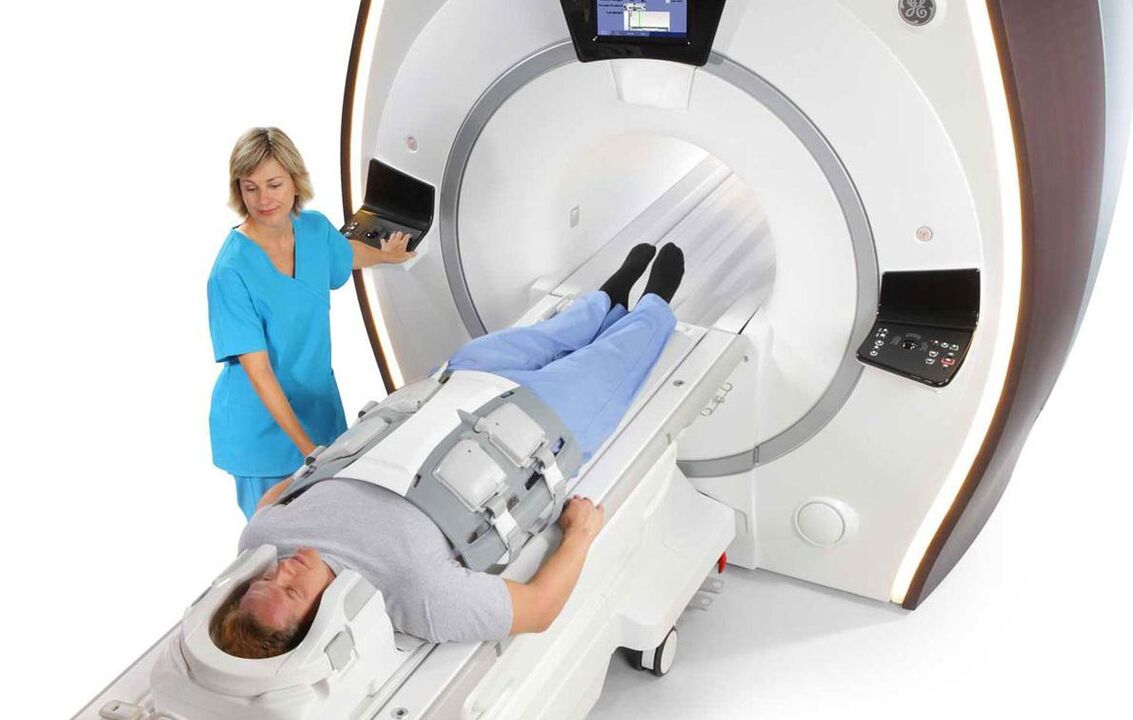
With severe and persistent pain in the hip joint, you need to contact an orthopedic specialist who will help establish an accurate diagnosis and prescribe an adequate treatment regimen.
After conducting an initial examination and collecting anamnesis, the doctor will give instructions for the path of the diagnostic steps:
- x-ray examination of the spine and hip joints;
- dopplerography and vessel angiography;
- electromyography;
- CT, MRI of thigh;
- laboratory tests that will show the presence or absence of other dangerous pathologies in the body.
What is the treatment?
Effective medicine
Depending on the patient's diagnosis, the doctor chooses an adequate drug therapy regimen aimed at eliminating concomitant symptoms and reducing the patient's general condition. During the period of conservative treatment, it is important to limit the load on the joints, if necessary, pay attention to bed rest, and use orthopedic devices. The following fund groups are used:
- Nonsteroidal anti-inflammatory drugs. Helps relieve inflammation, swelling, pain.
- Analgesic. Reduces acute pain.
- Glucocorticosteroids. If NSAIDs do not help eliminate inflammatory complications, steroid drugs are prescribed, which are injected directly into the joint cavity.
- Relax the muscles. Relieves muscle spasms.
- Hemostatic. Promotes absorption of the hematoma.
- Chondroprotectors. Restore cartilage structure, preventing further destruction.
Helper Method
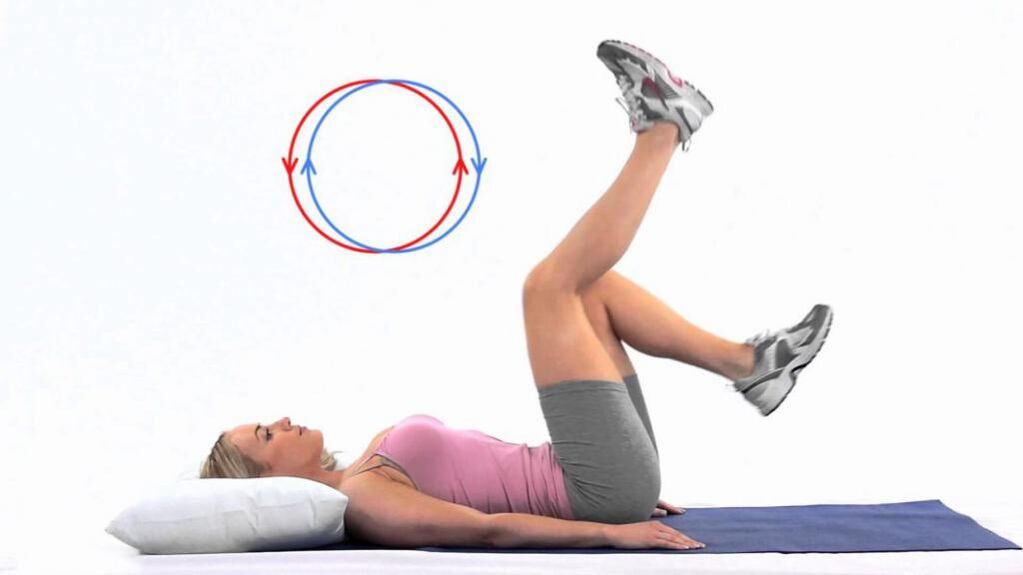
"Bicycle" exercises will help prevent problems from articulation.
To speed up recovery and normalize the function of the hip joint, it is useful to perform therapeutic exercises regularly. The training complex is selected by the doctor for each patient individually, taking into account the general condition and diagnosis. For prevention, it is recommended to do the following exercises every day:
- bicycle;
- scissors;
- pick up small objects with toes;
- walking barefoot on the toes and heels.
In parallel, a course of physiotherapeutic procedures is prescribed, for example, electrophoresis, phonophoresis, laser therapy, massage. When diagnosing a malignant tumor or advanced pathology of a deforming nature, surgical intervention is absolutely necessary. During the operation, the surgeon removes the affected tissue, if necessary, installs the implant. To prevent relapse and speed up recovery, rehabilitation is prescribed.












































